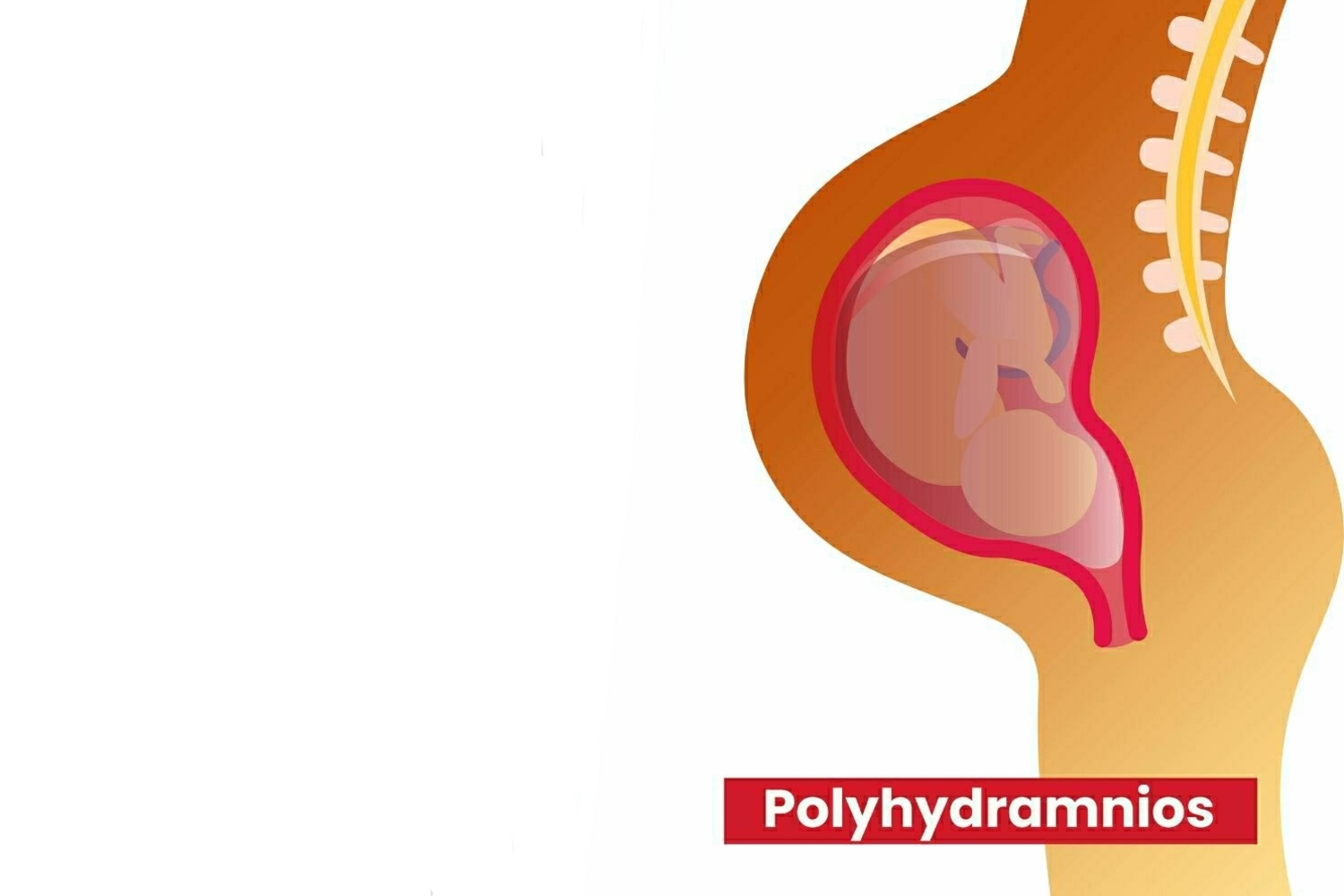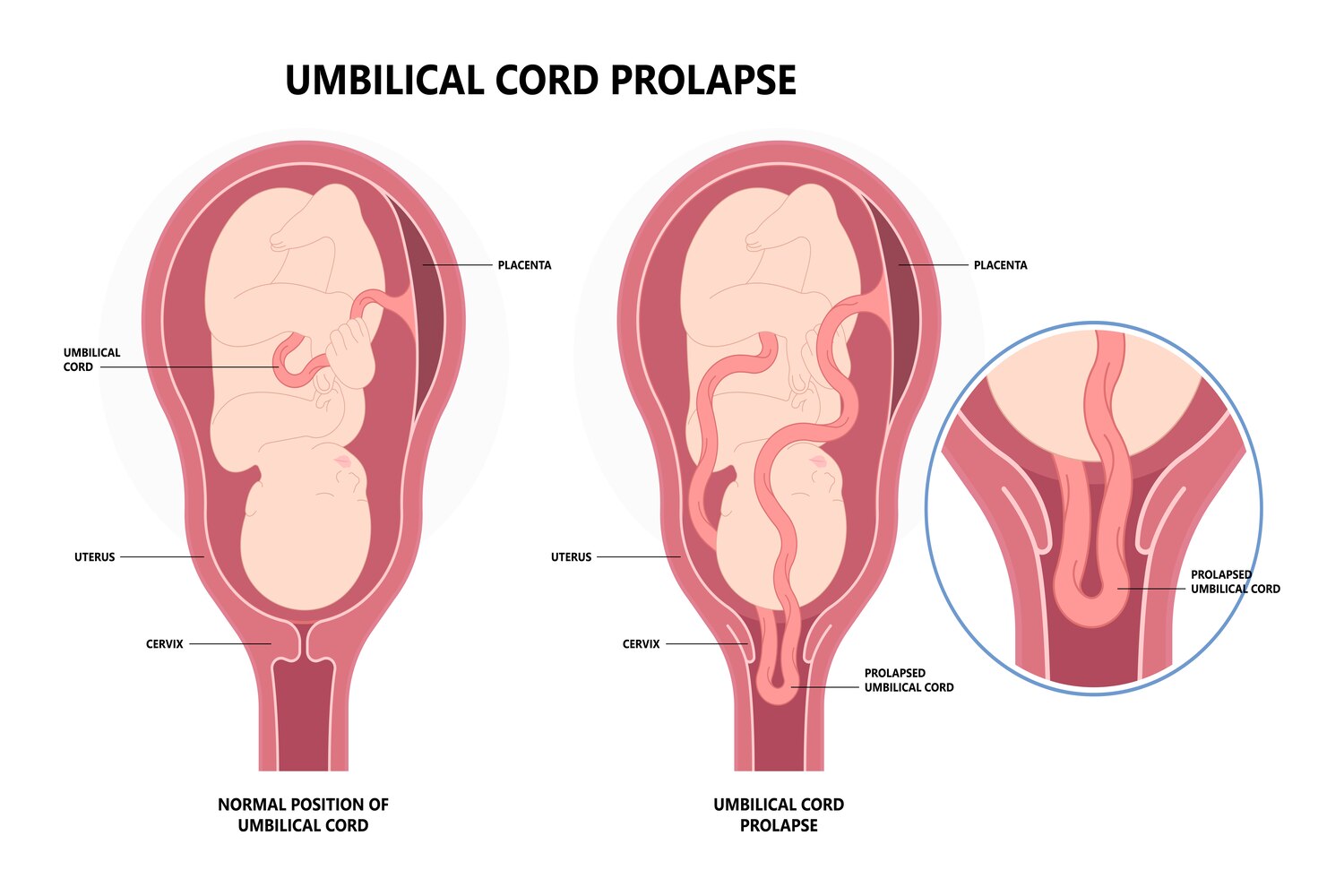
Amniotic fluid is a mixture of water, nutrients, hormones and many other biochemical products. The amniotic fluid serves as a protective barrier for the growing baby and prevents them from infection, mechanical stress. It also offers nutrition to the fetus and allows the growing baby to move easily inside the womb. This way it helps in musculoskeletal development.
It also helps with the development of lungs and different organ systems. What happens if the quantity of amniotic fluid increases abnormally during pregnancy? How does it affect the pregnancy? Continue reading to know more about polyhydramnios, a condition in which the amount of the amniotic fluid increases abnormally.
In This Article
- What Is Polyhydramnios?
- What Results In Polyhydramnios?
- Causes Of Polyhydramnios
- Symptoms Of Polyhydramnios
- What Are the Risk factors?
- Complications Due To Polyhydramnios
- Diagnosis Of Polyhydramnios
- How To Manage The Polyhydramnios Condition?
- What Are The Treatment Options For Polyhydramnios?
- FAQ’s
What Is Polyhydramnios?
Polyhydramnios is an abnormal condition that results in excessive amniotic fluid inside the womb.The increased levels of fluid can bring about several issues during different stages of pregnancy and delivery and can often lead to adverse pregnancy complications. According to the National Institutes of Health, polyhydramnios is seen in around 0.2% to 1% of pregnancies (1). The polyhydramnios can be either chronic, in which the buildup of amniotic fluid will progress slowly or can be acute, marked by the quick accumulation of amniotic fluid.
What Results In Polyhydramnios?
 Amniotic fluid serves as a protective coverage for the growing fetus. It helps to prevent baby from mechanical stress and also offers nutrition to the growing baby. It is generally made of water from the body of the mother. Amniotic fluid also contains biochemical compounds, nutrients, and hormones. Generally, a growing baby may swallow some amount of amniotic fluid that results in balancing of excessive fluid inside the uterus. However, after some time baby’s may release some amount of urine that also mixes with amniotic fluid and result in polyhydramnios. For various reasons, this delicate balance of amniotic fluid can be disturbed, resulting in too much or too little fluid buildup, either one of which is not a favorable condition for a healthy pregnancy (1).
Amniotic fluid serves as a protective coverage for the growing fetus. It helps to prevent baby from mechanical stress and also offers nutrition to the growing baby. It is generally made of water from the body of the mother. Amniotic fluid also contains biochemical compounds, nutrients, and hormones. Generally, a growing baby may swallow some amount of amniotic fluid that results in balancing of excessive fluid inside the uterus. However, after some time baby’s may release some amount of urine that also mixes with amniotic fluid and result in polyhydramnios. For various reasons, this delicate balance of amniotic fluid can be disturbed, resulting in too much or too little fluid buildup, either one of which is not a favorable condition for a healthy pregnancy (1).
Causes Of Polyhydramnios

In about 50% of polyhydramnios cases, there are no definite reasons to pinpoint. More studies are required in this field for further information. In the other 50% of cases, polyhydramnios is due to either maternal, placental, or fetal tissues.
Here are the most significant reasons behind polyhydramnios.
1. Polyhydramnios Due to Placental Issues
Polyhydramnios can occur as a result of some issues related to the placenta such as:
Chorioangioma of placenta
Placental chorioangioma is the most common placental tumor and results in polyhydramnios
Twin-twin transfusion
This is an issue associated with multiple pregnancies (precisely the monochorionic twin pregnancies) in which, the babies share a single placenta. As a result, one child receives more blood than the other one. One who gets more blood is the recipient and one who gets less blood is the donor. The urine output of the recipient baby increases tremendously due to increased blood supply resulting in polyhydramnios
Polyhydramnios due to fetal issues
Polyhydramnios can occur as a result of some issues related to the fetus that affect the ability of the fetus to swallow and excrete amniotic fluid.
Fetal anemia
The lack of sufficient RBC (red blood cells) in the baby increases cardiac output. This, in turn, increases the production of fetal urine resulting in polyhydramnios
Gastrointestinal tract issues
Gastrointestinal tract obstruction in the fetus can result in polyhydramnios as it interferes with the proper intake and excretion of amniotic fluid
Fetal renal issues
Issues related to the fetal kidney can increase the urine production resulting in polyhydramnios
Chromosomal abnormalities
Sometimes, chromosomal abnormalities like Down syndrome are found to cause polyhydramnios
Fetal macrosomia
Excessive amniotic fluid can be caused due to fetal macrosomia. In this case, the baby is larger for its gestational period
Polyhydramnios Due to Maternal Issues
Some of the maternal issues that develop during pregnancy can lead to polyhydramnios.
Diabetes
If the blood sugar level of the mother is high, it will influence the baby. As a result, the baby produces more urine. This results in the increased volume of the amniotic fluid (polyhydramnios)
Infections
Various infections like rubella, parvovirus, etc. that affect the mother reach the fetus and due to this fetus may develop certain abnormalities that hinder the proper intake and excretion of amniotic fluid triggering polyhydramnios
Hypertension
Pregnancy-induced blood pressure increases the amount of the amniotic fluid resulting in polyhydramnios
Preeclampsia:
Preeclampsia and polyhydramnios are closely related. Most of the mothers who develop preeclampsia are also found to experience polyhydramnios
Rhesus disease
Rhesus disease is a condition in which the antibodies in the mother’s blood destroy the baby’s blood cells, resulting in fetal anemia which is one of the major causes of polyhydramnios
Symptoms Of Polyhydramnios

Usually, the polyhydramnios has no significant symptoms. However, severe polyhydramnios shows certain symptoms as the increased amniotic fluid put pressure both inside and on the organs that are situated outside the uterus. The symptoms caused by severe polyhydramnios include:
- Decreased urine production
- Excessive weight gain
- Bigger belly for the gestational period
- Breathlessness
- Extreme swelling in ankles and feet
- Other pregnancy symptoms like heartburn, constipation, indigestion, stretch marks etc. start to worsen if the mother experience polyhydramnios.
What Are the Risk factors?
There are several risk factors, specifically medical conditions that may increase the risk of having polyhydramnios conditions. Some of the conditions are as follows:
Maternal or Gestational Diabetes
This maternal diabetes is very common during pregnancy. If the diabetes is not in control, your baby may be larger in size and women have excessive amounts of amniotic fluid.
Medical History of Polyhydramnios
In case a woman gives birth to a large baby during her previous pregnancy, there will be a risk of having a large baby and she may weigh more than 13 ounces or 8 pounds.
Maternal Obesity
Weight gain is normal during pregnancy but excessive weight gain can increase the risk of polyhydramnios.
Previous Pregnancy With Polyhydramnios
If a woman has experienced previous pregnancy with polyhydramnios condition, there will be a greater risk of having the same condition (2).
Complications Due To Polyhydramnios
 With excess amniotic fluid, there will be increased risks of:
With excess amniotic fluid, there will be increased risks of:
- Placental abruption
- Umbilical cord prolapse
- Fetal malposition
- Postpartum bleeding
- Premature rupture of the membrane
- UTI(urinary tract infection)
- Preterm delivery
Diagnosis Of Polyhydramnios
If the doctor doubts polyhydramnios, he will straight away go for an ultrasound. If needed he will go for a more detailed scan, in which, the amniotic fluid index is evaluated. This is done by measuring the four deepest pockets in four different areas of the uterus. If the total is or above 25 centimeters or a single pocket has fluid more than 8 cm deep, polyhydramnios is confirmed. Other tests like amniocentesis, glucose challenge test or karyotype are conducted to find the reason.
How To Manage The Polyhydramnios Condition?
 Once polyhydramnios is confirmed, the baby and mother will be closely monitored. Doctors may conduct various test for the detection of polyhydramnios condition. Some of the generic test are as follows:
Once polyhydramnios is confirmed, the baby and mother will be closely monitored. Doctors may conduct various test for the detection of polyhydramnios condition. Some of the generic test are as follows:
Non-stress test (This test is to detect abnormalities such as alteration in the heart rate of a growing fetus).
Fetal echocardiogram (It is for the detection of fetus circulatory system)
Doppler ultrasound (for overall growth of the fetus)
Biophysical profile (it is a form of usual ultrasound test in which baby’s breathing, movement and other activities will be monitored)
Amniocentesis (The test is useful for the detection of congenital disease and the same procedure is helpful to reduce excessive amniotic fluid).
In addition, complete bed rest, avoiding long journeys (even short jerky ones), using pregnancy cushions to support the big belly, avoiding lying down position immediately after food, consumption of less spicy food, etc, are suggested to avoid further complications.
What Are The Treatment Options For Polyhydramnios?
Only acute polyhydramnios are usually treated. Whereas, the moderate ones only needed to be closely monitored. The treatment options are determined according to the severity and cause (2).
Some of the treatment options are:
- Amnio reduction: Amnioreduction procedure is used to drain out excess amniotic fluid from the uterus. Doctors may perform amniocentesis (a similar procedure in which amniotic fluid is taken out through microinjections for the detection of genetic abnormalities) (3).
- Medicine to decrease fetal urine production: Certain oral medicines are prescribed to decrease the production of fetal urine. Though this is not recommended after the 31st week of gestation In some cases, doctors may prescribe medicine known as indomethacin (Indocin). The medicine is generally used for up to 48 hours to reduce amniotic fluid inside the womb (4).
- Medicines to regulate the fetal heart rate: In some cases, the doctor may prescribe medicines for stabilizing the baby’s heart rate (5).
Polyhydramnios during pregnancy is an unusual condition but in some mild cases it does not require any treatment. Your doctor will closely monitor pregnancy and may recommend some induction. In case, during testing doctors found excessive amniotic fluid, doctors may perform tests for assurance and proceed with treatment options available to get rid of excessive amniotic fluid condition. You don’t need to stress because in many cases, mothers may deliver healthy babies even if they have a polyhydramnios condition. It is advised to consult regularly with doctors to keep a track on the pregnancy and get treatment early to prevent any complications.
FAQ’s
1. What Happens If There Is Too Much Amniotic Fluid During Pregnancy?
Presence of excessive amniotic fluid during pregnancy can put pressure on the nearby organs. This may cause several complications that may be serious if the condition develops during early pregnancy. At an early stage more amniotic fluid will build up as a result excessive fluid can create problems. Although the fluid itself does not cause harm to the growing fetus inside the womb, it may result in complications such as early labor, placental abruption, premature birth, postpartum hemorrhage, still birth and umbilical cord prolapse.
2. How Can I Reduce Polyhydramnios During Pregnancy?
Polyhydramnios during pregnancy cannot be prevented. However, it can be reduced to an extent so it cannot harm the growing fetus. In case of mild polyhydramnios, there is no requirement of specific treatment to reduce amniotic fluid━it will go its own after some time. A pregnant woman needs treatment if she is experiencing another disease, diabetes. Treatment options such as amniocentesis for the draining of excessive amniotic fluid. However, drainage may pose a risk of health issues such as premature rupture and preterm labor. Hence, ensure to proceed with treatment under the certified doctor.
3. Can A Baby With Polyhydramnios Have A Normal Delivery?
Yes, a baby growing inside the womb with polyhydramnios condition can be delivered normally. However, during delivery the baby might be in an abnormal position which can create difficulty in delivery. Moreover, the presence of excessive amniotic fluid can cause severe problems such as premature labor and early delivery of the baby.
4. Does Polyhydramnios Mean Big Baby?
Having polyhydramnios or excessive amniotic fluid is a sign that a baby is bigger inside the womb than average size. A bigger baby may produce a generous amount of urine that will reflect in the amniotic fluid surrounding the baby. However, when the polyhydramnios is mild, it may not affect the size of the baby and it will grow inside the womb normally.
References –
- Polyhydramnios: Causes, Diagnosis and Therapy
https://www.ncbi.nlm.nih.gov/pmc/articles/PMC3964358/ - Polyhydramnios (too much amniotic fluid)
https://www.nhs.uk/conditions/polyhydramnios/# - Amnioreduction in the management of polyhydramnios complicating singleton pregnancies
https://www.ajog.org/article/S0002-9378%2814%2900504-3/fulltext - Long-term indomethacin therapy decreases fetal urine output and results in oligohydramnios
https://pubmed.ncbi.nlm.nih.gov/2006947/#:~ - Dexamethasone and fetal heart rate variation
https://pubmed.ncbi.nlm.nih.gov/7947501/
